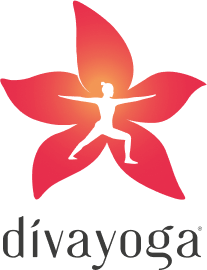Yoga for frozen shoulder

What is Frozen Shoulder Syndrome?
FSS or the frozen shoulder syndrome is a syndrome that leads to the restriction of movement of the shoulder by stiffness and pain. It occurs due to the thickening and tightness of the connective tissue enclosing the shoulder joint. The actual cause of this condition is unknown, it mostly affects patients with chronic illness, arm fracture, and prolonged bed rest due to illness. Researches have shown that good range of motion (ROM) training can prevent the fibrosis of the shoulder joint.
It develops unknowingly, slowly towards stages like freezing (painful stage), frozen stage (decrease of pain), thawing (improvement in ROM), due to lack of movements to the shoulder joints, resulting in poor blood circulation and weaker soft muscles around the joints.
How can yoga help for a frozen shoulder?
Our shoulder is one of the largest joints with complex mechanisms and functionality. Nowadays due to a sedentary lifestyle, the upper body workout in day to day life is very minimal and underused. To overcome the issues related to frozen shoulder, yoga has various simple and effective shoulder joint mobility practices like sukshma vyayama (subtle practices to uplift energy) majorly used by yogis as a warm-up before intense yoga practice to prepare their joints. It is one of the best methods to fight symptoms of frozen shoulder, shoulder impingement and bursitis as well.
Exercise these 5 yoga practices to get relief from frozen shoulder:
1. Skandha Chakra (Shoulder Rotation)
This is an effective practice for the frozen shoulder to increase the range of motion of the shoulder joint and activate muscles, ligaments and tendons associated with shoulder movement.


Steps:
- Stand in Tadasana by keeping your feet together, hands by the side with your spine straight.
- Place the fingertip of both hands on the corresponding shoulder.
- Rotate your shoulder socket by touching both the elbow in front of your lateral side of your body, stretch back by contracting your shoulder blade, touch your ears with the bicep and then bring it back to the starting position.
- Continue the practice 12 times forward and backward rotation.
- When you move your elbow upward, inhale and downward, you exhale.
- Relax and drop your hands down.
Benefits:
- Reduces neck and shoulder pain if practised regularly.
- Improves joint mobility in the shoulder and helps to avoid rotator cuff tendinitis.
- Activates muscles associated with the chest and shoulder blade as well.
Contraindications: Make sure you practice this exercise very slowly with proper breathwork.
2. Bhuja-wali Sakti-vikasaka (Hand strengthening movement)
It is similar to the movement of the bird’s wings. It works on muscles associated with the movement of adduction and abduction of the arm. It is an amazing practice to strengthen muscles around the shoulder.


Steps:
- Place both the palms by the side. Palms facing the thighs in the seated position as shown in the picture.
- Inhale, raise the arms with force and stop the arm close to the ears.
- Exhale, drop the arms down with force and stop the arm close to the thighs.
- Repeat the movement 12 times actively.
Benefits:
- The natural resistance caused in the movement helps engage more muscle fibre, resulting in strengthening of the arm.
- Activates deeper muscles in the shoulder joint.
- Therapeutic for shoulder problems like frozen shoulder.
Contraindications: Do not move your arms with force if you experience sharp pain while doing this exercise. You may try practising this slowly.
Brick Yoga Sequence for Flexibility | Upper Back Opening Yoga Technique
3. Skanda Shakti Vikasaka (Shoulder energizing practice)
This vigorous practice to the shoulder blade and joint focuses on streaming the blood circulation and generating warmth to overcome pain related to frozen shoulder. Holding the breath in the practice helps in improving the health of the lungs and heart.


Steps:
- Inhale deeply and hold your breath. Pout your mouth, blow out the cheeks with chin touching the collarbone and shoulder rolled back.
- Close your eyes, move the shoulder blade up and down vigorously by bringing the shoulder close to the ears and drop in freely with gravity.
- Repeat 12 times.
- Exhale and raise the chin up.
- Repeat for 2 more times.
Benefits:
- Activates blood circulation, nervous system and strengthen the muscles around the shoulder blade and shoulder joint.
- Regular practice helps to overcome problems like frozen shoulder, shoulder impingement and bursitis.
- Tones facial muscles and improves lung capacity.
Contraindications: If you feel sharp pain while practising this, try exercising slowly.
4. Paschima Namaskarasana (Reverse Prayer Pose)
This is an amazing heart opener and provides a good internal rotation to the shoulder joint relieving the stress and activating muscles around the shoulder blade. It’s also is an effective practice to deal with upper back pain.

Steps:
- Stand tall keeping your spine straight.
- Inhale, take the hands by the side and bend from the elbow to join the hands in namaskara mudra, touching the palm and fingers of both the hands to feel a good stretch in the chest.
Benefits:
- Helps in the correction of a hunchback.
- Helps in improving lung capacity.
- Improves the flexibility and range of motion of the shoulder joint
Contraindications: If you are not able to join the hands behind, touch the elbow with the opposite hand from behind.
5. Gomukhasana (Cow face pose)
This posture resembles the face of the cow justifying the name. Right-handed people might feel discomfort or pain in the left shoulder due to muscle disproportion, with continued practice this can be balanced. It is one of the most effective practices to alleviate symptoms related to frozen shoulder.

Steps:
- Sit in dandasana, seated leg straight position.
- Bend the left leg, place it under the left hip, right leg above the left and right heel touching the left hip similar to a cow’s face.
- Inhale, interlock the hands from behind by raising the right hand from above and the left hand from below with a bend at the elbow on both the hands.
- Exhale, release from the posture and repeat on the other side.
Benefits:
- Therapeutic for stiff shoulders and relieves pain from the upper and lower back.
- Strengthens muscles along the spine.
- Improves shoulder mobility and blood circulation to the deeper muscles in the shoulder joint.
Contraindications: If you experience sharp pain in your shoulders while interlocking your hands, use a yoga belt or towel to assist the stretch.
We hope these asanas help you deal with the frozen shoulder and relieve stiffness in your upper back.
Please note, do not treat this as medical advice, do consult a doctor before beginning these practices.
